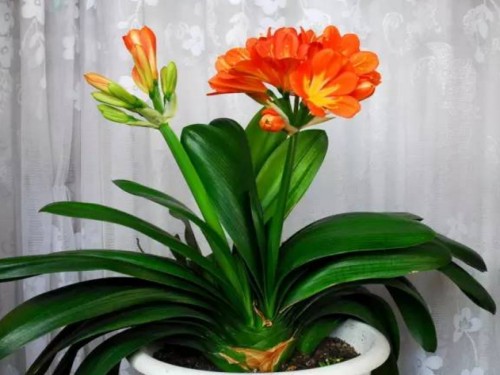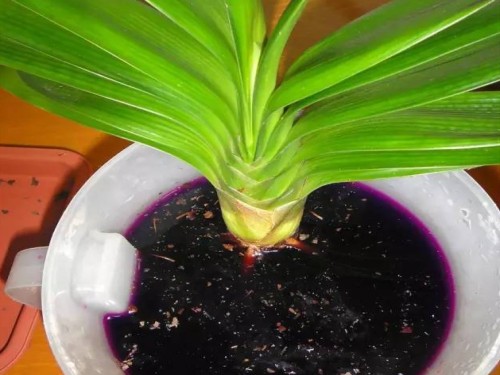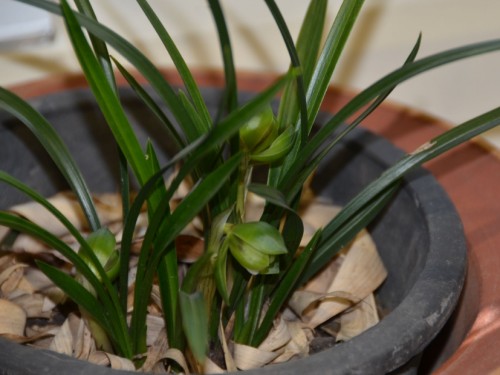The treatment method of rotten Root of Cymbidium
After the flowers have rotten roots, they will quickly cause the death of the aboveground parts. If it is a non-infectious rotten root, the plant should be removed from the basin as soon as possible, cut off the rotten root, and carefully maintained in the semi-shady place after re-potting. If it is found early and dealt with in time, it can be saved, but if it is too long and the water loss is serious, it cannot be cured.
The flowers of Cymbidium are bright and have high ornamental value, but the cultivation of Cymbidium is not so easy, so it is necessary to master strong breeding technology. The rotten roots of Cymbidium will cause irreparable losses to the growth and flowering of the plant, no matter how they are rescued in time, and it will take quite some time to fully restore their growth. Therefore, at ordinary times, we should do a good job of prevention as far as possible to avoid the occurrence of rotting roots, and what are the main measures to prevent the rotting roots of Cymbidium?

Here are some measures to prevent the rotting roots of Cymbidium:
1. Make the cultivated soil well.
The practice shows that 4 parts of peat soil, 4 parts of rotten leaf soil and 2 parts of coarse sand make it a loose and fertile acid culture soil with good drainage and air permeability. Planting Cymbidium with this kind of culture soil is beneficial to the development and robustness of the root system, and can effectively avoid rotting roots.
2. Choose the appropriate flowerpot
The tile basin with good water absorption and ventilation performance is more suitable, especially the long tube tile basin is better, which is not only conducive to the downward extension of the root system, but also makes the soil of the root not wet for a long time because of the small distance between the basin wall and the root system. The size of the flowerpot should be changed with the development and growth of the orchid plant, and it is not suitable for small seedlings to be planted in large pots or large plants squeezed in small pots.
3. Do not water too much or too often
It should be rewatered when the surface of the basin soil is dry, and it can not be watered for several days after a thorough pouring. If the water content of potted soil is too large for a long time, the fleshy root of Cymbidium is easy to soak. In the spring and autumn, the magnolia grows vigorously, and the water can be watered more appropriately. In summer, we should strictly guard against long rain and stagnant water. In winter, according to indoor temperature and humidity, it is usually watered once a week or so.
4. Fertilization should be moderate.
Gentleman orchids do not use thick fertilizer, especially raw fertilizer that is not fully ripened. No fertilizer is applied in the hot summer season. During the normal growth period, fully mature dilute organic liquid fertilizer can be poured every 10 days or so, and 0.2% urea and 0.1% potassium dihydrogen phosphate solution can be sprayed as extra-root topdressing.
Next, let's talk about what to do if the root of the gentleman's orchid is rotten. Don't worry about it first. As long as the foundation is still there, it can still be saved. Take a closer look at the following content:
The way to rescue the rotten root is to pour out the plant, remove the rotten root and cut it off, then coat the wound with charcoal powder or fine furnace ash, or rinse the root with potassium permanganate water and put it in the sun for about 10 minutes. Use ultraviolet radiation to sterilize, if the root has rotted more than half, trim and clean the rotten root, after sterilization, it can be put into fine sand to urge the root. If only a few roots are rotten, transplant them into the nutrient soil that has been replaced. Watering is controlled within half a month and can be restored in one or two months.
If the fleshy roots are all rotten, you can cut off all the rotten roots, wash the roots, apply charcoal powder or fine furnace ash, and put them in a fine sand basin to promote the roots. after two or three months, they can also take root and send leaves again.
In addition, using the rotten leaf soil as the culture soil to rescue the rotten root of the gentleman orchid, the effect is also good, the specific method is to wash the fleshy root with clean water twice, then pinch off the rotten root, spread paper cigarette ash on the wound, dry it for two hours, plant it in a coniferous humus basin, put it in a half-shaded place, timely watering, keep the pot soil moist, and give birth to new roots half a month later.
The planting process of Cymbidium should be observed frequently, and if it is found that there is a rotten root phenomenon, it should be treated immediately. Take out the plant, remove the rotten root, rinse the root with 1% potassium permanganate water for disinfection, or apply some charcoal powder to the affected area and sun the root in the greenhouse for about 30 minutes. If the rotten root is more than 50% or all rotten, use the above method to treat and then use river sand to promote the root. The root-promoting temperature should be higher than the normal temperature, which is generally controlled at about 22-30 ℃, so that new roots will grow after about 2 months, and then transplanted to the nutrient soil basin.
Time: 2019-06-01 Click:
- Prev

What about the rotten roots of potted orchids?
The flowers of Cymbidium are bright and have high ornamental value, but the cultivation of Cymbidium is not so easy, so it is necessary to master strong breeding technology. The root rot disease of Cymbidium can occur all the year round, but it is most common in summer. If you don't pay attention to water control, it is easy to rot the root. It's a pity to let it go. Don't be discouraged.
- Next

How to remedy the rotten roots of orchids? How to deal with it?
Some flower lovers who are beginners to raise orchids often do not know much about the habits of orchids and find it difficult to raise orchids well, burn their tips and pour seedlings, and there are only a few dead piles left after a year or two. Most of the reasons are caused by the rot of Langen. As the saying goes, orchids grow roots first, with good roots, exuberant leaves and fragrant flowers. To cultivate a good orchid
Related
- Fuxing push coffee new agricultural production and marketing class: lack of small-scale processing plants
- Jujube rice field leisure farm deep ploughing Yilan for five years to create a space for organic food and play
- Nongyu Farm-A trial of organic papaya for brave women with advanced technology
- Four points for attention in the prevention and control of diseases and insect pests of edible fungi
- How to add nutrient solution to Edible Fungi
- Is there any good way to control edible fungus mites?
- Open Inoculation Technology of Edible Fungi
- Is there any clever way to use fertilizer for edible fungus in winter?
- What agents are used to kill the pathogens of edible fungi in the mushroom shed?
- Rapid drying of Edible Fungi

